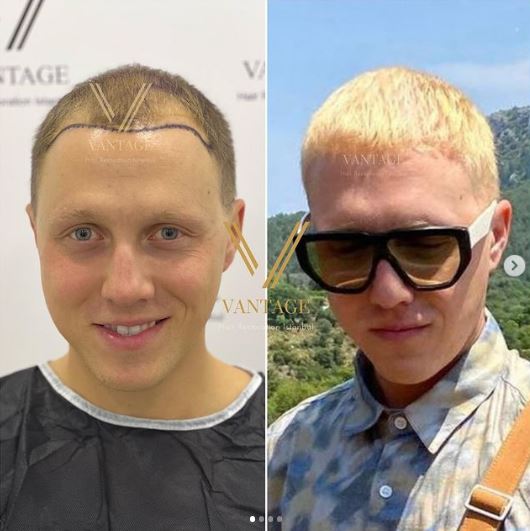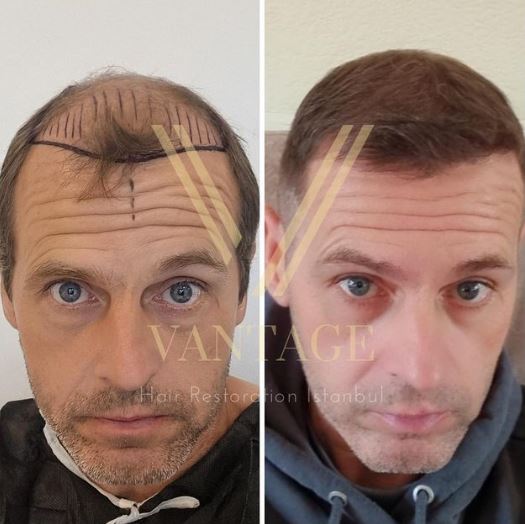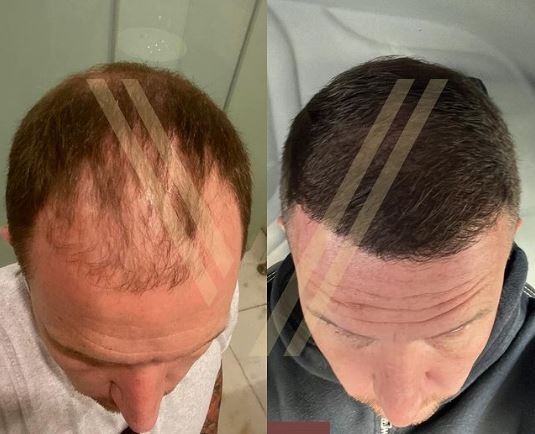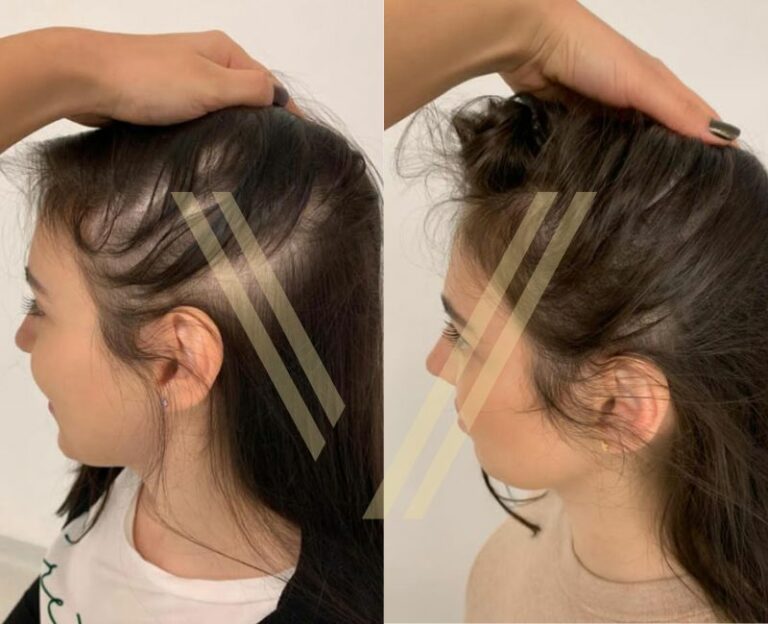
Hair loss is a common concern that can significantly impact one’s self-esteem and overall confidence. While diffuse thinning hair, characterized by a widespread decrease in hair density across the scalp, presents unique challenges, a hair transplant can be a viable solution. If you are curious about your options here at Vantage Hair Restoration for diffuse thinning hair, today we will explore the various aspects of diffuse thinning hair transplants. From eligibility considerations and available options to post-transplant care, understanding these key factors will help individuals make informed decisions about restoring their hair density and regaining their confidence.
Can You Get a Hair Transplant If You Have Diffuse Thinning Hair?
Diffuse thinning hair refers to a progressive and uniform thinning of hair across the scalp, making it more challenging to identify a stable donor area for transplantation. However, hair transplants can still be performed for individuals with diffuse thinning hair. The success of the procedure depends on several factors, such as the donor hair characteristics, the extent of hair loss, and the expertise of the hair transplant surgeon. A thorough evaluation by a qualified hair restoration specialist is essential to determine if a hair transplant is suitable for someone with diffuse thinning hair.
Hair Transplant Options for Naturally Thin Hair
So, what are ou options for diffuse thinning hair? Depending on the condition of your hair you have different options to choose from.

Options If You Have Thin Hair
Individuals with naturally thin hair may have concerns about achieving satisfactory hair density after a transplant. However, advancements in hair transplant techniques and technology, such as micrografting and follicular unit extraction (FUE), have made it possible to achieve natural-looking results even with thin hair. Hair transplant surgeons can strategically place the grafts to create an illusion of density and enhance the overall appearance of the hair.
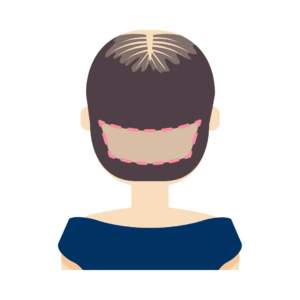
Options If You Have a Thin Donor Area
In some cases, individuals with diffuse thinning hair may also have a thin donor area, making it challenging to obtain an adequate number of hair grafts for transplantation. In such situations, alternative donor areas can be considered, such as body hair transplantation or utilizing hair from other family members with compatible hair characteristics. These options require careful evaluation and discussion with a hair transplant specialist to determine feasibility and potential outcomes.
Determining Graft Requirements for Diffuse Thinning Hair Transplant
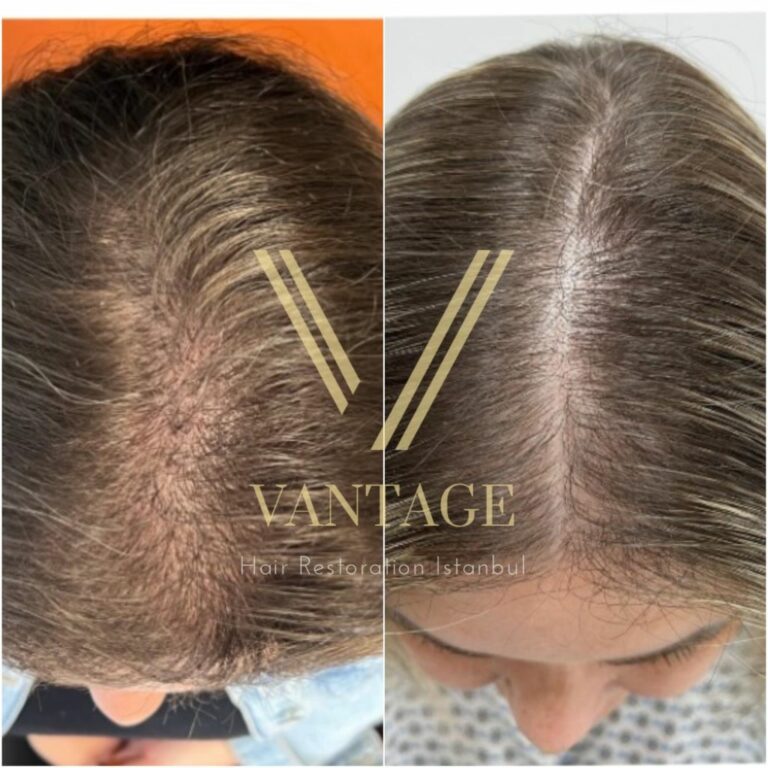
Determining the number of grafts required for a diffuse thinning hair transplant is a crucial step in planning the procedure. It involves evaluating the extent of hair loss, the desired density, and the available donor supply. The expertise of a skilled hair transplant surgeon is vital in accurately assessing graft requirements and devising a customized treatment plan. The surgeon will consider factors such as the donor area’s characteristics, the recipient area’s size, and the patient’s aesthetic goals to determine the optimal graft count for the best possible outcome.
The Transformation Process: When Does Transplanted Hair Thicken?
Hair transplant results are not immediate, and it takes time for the transplanted hair to grow and thicken. The transplanted hair follicles typically go through a resting phase known as telogen before entering the anagen or growth phase. During this period, the transplanted hair sheds, and new hair begins to grow from the follicles. The timeline for hair thickening varies from person to person but can typically be observed around three to six months after the procedure. Full results, including maximum hair density, can be expected within 12 to 18 months post-transplant.
Does Transplanted Hair Thin Over Time?
Transplanted hair is typically resistant to the effects of DHT (dihydrotestosterone), the hormone responsible for male and female pattern baldness. However, it is important to note that hair loss may still occur in the native hair that surrounds the transplanted area due to genetic factors. This means that while the transplanted hair should remain intact, ongoing hair loss in other areas of the scalp may require additional treatment or maintenance to maintain overall hair density.
Pricing and Costs: How Much Does a Diffuse Thinning Hair Transplant Cost in Turkey?
The cost of a diffuse thinning hair transplant can vary depending on several factors, including the geographic location, the clinic’s reputation, the surgeon’s expertise, and the number of grafts required. Turkey has emerged as a popular destination for hair transplants due to its renowned clinics and competitive pricing. On average, the cost of a diffuse thinning hair transplant in Turkey can range from 1,000 to 4,500 dollars. It is essential to research and choose a reputable clinic with experienced surgeons to ensure safety, quality, and satisfactory results.
Addressing Persistent Thinness: What to Do After a Hair Transplant

Considering Medications for Improving Hair Density
In some cases, individuals with diffuse thinning hair may benefit from using medications to enhance hair density. Finasteride, an FDA-approved oral medication, can help inhibit the production of DHT and prevent further hair loss. Additionally, minoxidil, a topical solution, can be used to promote hair growth and improve overall hair density. These medications should be discussed with a healthcare professional to assess their suitability and potential side effects.

Understanding the Role of Platelet-Rich Plasma (PRP) in Hair Restoration
Platelet-rich plasma (PRP) therapy has gained popularity as a complementary treatment for hair restoration. PRP utilizes the body’s own growth factors to stimulate hair follicles, promote healing, and enhance hair growth. By injecting concentrated platelets into the scalp, PRP therapy can help improve hair density and overall hair quality. However, the effectiveness of PRP may vary from person to person, and multiple sessions may be required for optimal results.

Exploring Secondary Hair Transplants for Enhancing Density
In cases where individuals desire further improvement in hair density after the initial hair transplant, secondary hair transplant procedures can be considered. Secondary hair transplants involve harvesting additional grafts from the donor area to fill in areas of persistent thinness or to increase overall density. This approach requires careful planning and consideration of factors such as donor supply, scarring from the previous transplant, and the overall scalp condition.


